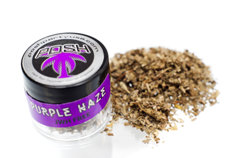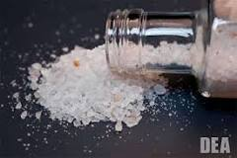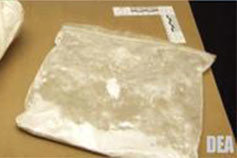Synthetic Drugs

Commonly abused drugs such as alcohol, cannabis, cocaine, and heroin are still the most widely used, but hundreds of new synthetic substances have emerged in recent years. The main danger is the lack of knowledge of what they really contain.
The chemical substances used to produce these drugs are often mass-manufactured in industrial plants and are supplied across the globe to be synthesized in clandestine laboratories to form a variety of synthetic drugs.
Different Types of Synthetic Drugs
Synthetic drugs are any type of drug that are that manufactured by humans and does not occur in nature. Synthetic drugs can also refer to a naturally occurring drug that has been significantly altered through processing. They are distributed through various channels, including the internet, filling stations, electronic music parties, or raves, and leisure venues. Here are a few examples of synthetic drugs:

Synthetic cannabinoids
Multiple man-made chemical compounds belong to this group. They cause effects similar to cannabis, as they bind to the same cannabinoid receptors in the brain, but they have a greater intensity and duration. One of the first commercial names for these substances was Spice.
Due to the chemical composition of this drug frequently changing, it’s impossible to accurately know the chemical composition of the drug or the results it will achieve.
Synthetic cathinones — “Bath Salts”

Synthetic cathinones are commonly called “bath salts”. Cathinone is the main active component in khat or Catha edulis leaves. Chewing these leaves produces a psychostimulant effect similar to that of amphetamines. From the 1920s onwards, synthetic cathinones began to be created from the chemical structure of cathinone. The first were ephedrone and mephedrone. For years they have been sold in shops and on the internet camouflaged as bath salts.

Fentanyl Derivatives
Fentanyl is a synthetic opioid that is marketed as an analgesic (it is about 100 times more powerful than morphine) under a doctor's prescription. Recently, derivatives of this substance have appeared with greater analgesic power. The presence of ocfentanyl, furanylfentanyl and cyclopropylfentanyl has been detected. Sometimes they are marketed as if they were another substance (heroin, ketamine, cocaine, benzodiazepines, or others).
Tryptamines

Possibly the oldest synthetic substances used broadly are tryptamines, such as LSD, psilocybin, and DMT. The basic structure of a tryptamine is similar to the naturally occurring essential amino acid tryptophan found in many foods. Tryptamines are commonly abused for their hallucinogenic effect.
Prolonged use and in high doses can induce manic and psychotic episodes or an increase in the symptomatology associated with these states. Similarly (and as is usually the case with psychoactive substances), it can generate withdrawal symptoms when faced with sudden withdrawal.
Main risks

Many of these drugs are powerful stimulants. They can cause hyperthermia, cardiac alterations, arrhythmias… “If the user has a heart problem that has not been detected, they can cause death,” Luis Felipe Callado, Profesor of Pharmacology professor stresses.
In addition to the cardiovascular risks, it is worth noting the ability of many of these substances to create psychosis, anxiety, and depression in the user.
Prevention
Education and the implementation of preventive measures from childhood is an important tool to arm children with the true facts about drugs so they can make the correct choices later in life when they are faced with the choice to use drugs.
Prevention is the best weapon in the long term, but in the short term, when someone has already made the decision to use a substance and has become addicted, all that can be done is to try to reduce the risk.
Contact Narconon for more information.
Sources:
- Luis Felipe Callado, Profesor of Pharmacology of the University of Vasco State (UPV-EHU) and investigator of the Center of Biomedical Research in the Mental Health Network (Cibersam).
- https://cuidateplus.marca.com/familia/adolescencia/2018/11/30/nuevas-drogas-peligro-desconocido-168341.html

